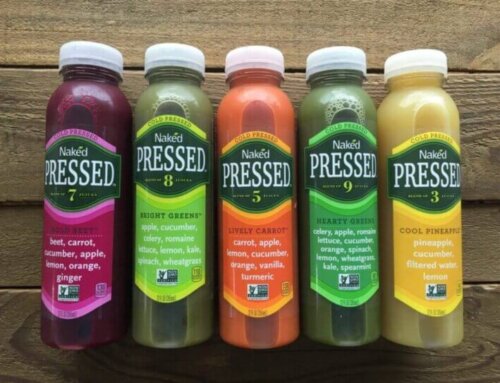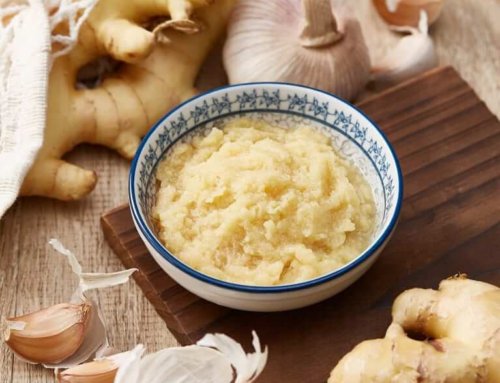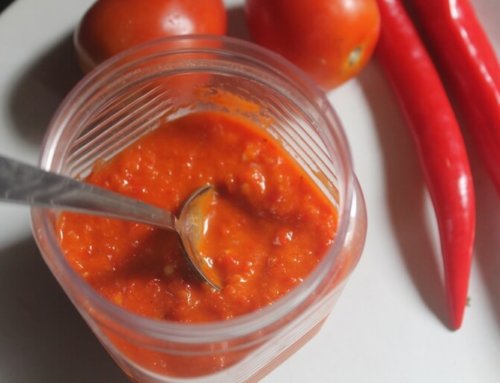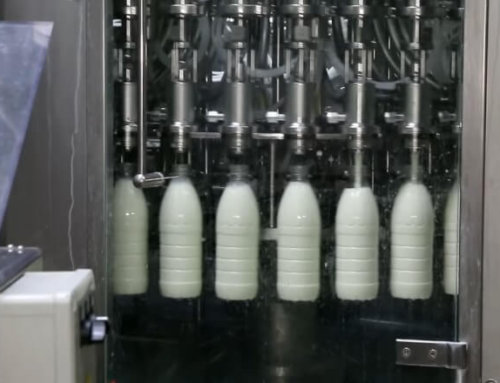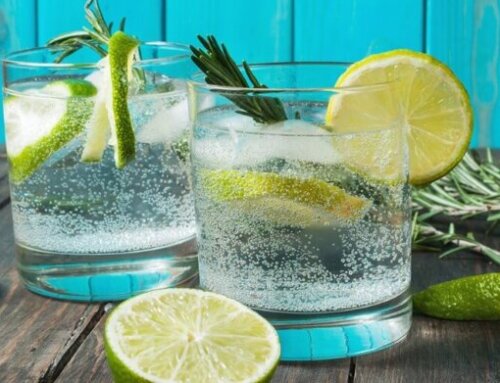Project Description
Fermented Juice Processing Line
Fermented Juice Processing Line Description
- Fermented juice processing involves selecting and preparing fresh fruit, extracting and optionally pasteurizing the juice, introducing fermenting agents (yeast or bacteria), maintaining optimal fermentation conditions, monitoring progress, clarifying and stabilizing the juice, and finally bottling and optionally aging the fermented beverage to enhance its flavor and quality.
- Fermented juice mainly refers to fruit wine and fruit vinegar: fermented fruit wine refers to the product obtained by fermenting and aging the fruit juice with alcohol after crushing and squeezing the juice. There are many types of fruit wine, with grape wine being the most common. According to different brewing methods, it can be divided into fermented fruit wine, distilled fruit wine, and prepared fruit wine. The principle of fruit wine fermentation is the process in which fruit juice undergoes a complex chemical reaction under the action of yeast and biological enzymes to produce ethanol and carbon dioxide. Fermented fruit wine does not need to be distilled and accharified before fermentation. Its alcohol content is generally 8-20 degrees; Fermented fruit vinegar refers to the use of fermented fruit wine as raw materials, through aerobic fermentation of acetic acid bacteria, to oxidize fruit wine into acetic acid as the end product. The acetic acid content is generally 6 to 7 degrees. The fermentation process of these two products is different. Fruit wine fermentation is an anaerobic fermentation process, and fruit vinegar fermentation is an aerobic fermentation process.
- Almost all seasonal fruits and vegetables with high sugar content can be fermented to make fruit wine or fruit vinegar. People are used to calling fruit wine or fruit vinegar by the name of the fruit. For example glucose wine (vinegar), cider (vinegar), dragon fruit wine (vinegar), plum wine (vinegar), etc.
- The key process of fermented juice processing: material juice making (crushing, enzymatic hydrolysis) – composition adjustment (Blending) – alcohol fermentation – acetic acid fermentation – clarification – aging – Blending- sterilization — Finished product filling.
- Alcohol fermentation: also known as pre-fermentation, which is anaerobic fermentation. It is the yeast that converts glucose into ethanol and carbon dioxide through a wine enzyme system. Sugar is the main raw material for alcohol fermentation. Alcohol fermentation requires control of the sugar content and fermentation temperature. The alcohol content is 12 degrees, 1.7 % sugar can produce 1% alcohol, so the raw material Brix need to be 20-24, if the initial Brix value is more than 25%, will inhibit the growth of yeast. and the fermentation temperature is 25 degrees Celsius. The effective volume of the alcohol fermenter is about 80%.
- Acetic acid fermentation: also known as main fermentation, for aerobic fermentation, is the process of oxidation of ethyl ethanol into acetic acid under the action of acetic acid bacteria. Factors affecting acetic acid fermentation include temperature, alcohol content and inoculum size. The alcohol content is 6 degrees, the fermentation temperature is 32 degrees Celsius, and the effective volume of the fermenter is 70%.
- The raw material of the fermented juice processing line can be concentrated juice or fresh fruits(apple, orange, grape, berry fruits, banana, pomegranate), and the capacity is from 10T/D-500T/D.
The Difference Between Acetic Acid Fermentation and Alcohol Fermentation
| Item | Alcohol Fermentation | Acetic Acid Fermentation |
|---|---|---|
| Microorganism | Yeast | Acetic acid bacteria |
| Oxygen | Anaerobic fermentation | Aerobic fermentation |
| Smell and Taste | Winey | Sour |
| Bubbles and Foams | Foam and bubble | No Foam and bubble |
| Fermentation Liquid Color | Turbid | Turbid with white mycorrhizal membrane |
| Finished Products | Ethanol and carbon dioxide | Acetic acid |
| Raw Material | Glucose | Ethanol |
End Package of Fermented Juice Processing Line
The fresh fruit after juice extracting or concentrated juice after acetic acid fermentation and alcohol fermentation, we will get the fruit vinegar and fruit wine. The end products can be filled into bottles or cans.

Fermented Juice Processing Line Technological Flowchart
Fresh fruits(Apple, grape, berry fruit, passion fruit, pomegranate) after washing, sorting, crushing, juice extracting, standardization, fermentation, juice clarification and then the juice will be for acetic acid fermentation and alcohol fermentation, blending, sterilizing then the end products will be filled into bottle or cans; If we use the concentrated juice as the raw materials, then the concentrated juice will get enzyme treatment and clarification, and juice is fermented then sterilized and filled into bottle or cans.

Key Machine Of Fermented Juice Processing Line
Blending system
The blending system is divided into pre-blending and post-blending:
- Pre-blending is standardizing the juice before fermentation, some fruit sugar content is not enough for the alcohol fermentation, so in here we can add sugar syrup into the juice to adjust the juice into the required Brix for fermentation.
- Post-blending refers to adjusting the acid content, alcohol content, sugar content and color, flavor of the fruit wine/vinegar after fermentation and clarification to meet the end product’s quality requirements.
Alcohol fermentation tank
Fermentation is the key process of turning fruit into wine under the action of yeast. The main process control points in the fermentation process are:
- Adjust the sugar content of raw materials so that the alcohol content of the fermented product meets the predetermined requirements. Alcohol in fruit wine is produced by the conversion of sugar, so the content of sugar in fruit raw materials determines the alcohol content of fermentation. Generally, 1.7g sugar can be fermented to produce 1 alcohol, so to ferment to obtain 12% (V/V) alcohol, the sugar content of fruit raw materials should be 204g/L
- Add active dry yeast and sulfur dioxide to make the alcoholic fermentation go smoothly. After the fruit fermentation substrate is treated with an appropriate amount of sulfur dioxide, the alcoholic fermentation will also be triggered without adding artificial yeast. But artificially selected active yeast is added to the fermentation substrate, it can trigger alcoholic fermentation early, kill wild yeasts, ensure the normal and smooth fermentation of excellent cultured yeasts, increase the fruity aroma of fruit wine, and ensure the stable and consistent quality of fermented wine.
- Control the fermentation temperature and time. A certain amount of heat is generated during the alcohol fermentation process. As the fermentation progresses, the heat released continues to increase. Every 1 degree of alcohol is produced, the temperature rises by about 2.5°C. If the fermentation temperature is too high, the texture of fruit wine will be poor, it is also unfavorable to the growth and reproduction of yeast, and it is easy to cause the suspension of fermentation.
- Usually, the fermentation temperature of white fruit wine is controlled at 18-22°C for about 15 days, and the fermentation temperature of red fruit wine is controlled at 25-30°C for about 7 days. During the fermentation process, cooling measures are generally taken. shower, interlayer cooling, etc.
- When the sugar content reaches about 1%, or when the specific gravity drops below 1000, the fermentation ends and enters back storage.
- During the fermentation process of red fruit wine, the juice circulation should be carried out regularly to increase the pigment content and aroma of red fruit wine, and circulate is an important process for red fruit wine fermentation.
Fermentation tank volume:1000L-50000L,tri-layers, can be cooled by chill water, the tank is welded with a 3mm SUS304 stainless steel 2B plate, with a manhole, CIP spray ball, temperature sensor, product inlet and outlet, sample valve, cooling medium inlet and outlet, and venting hole. Configured by Japanese Yokogawa static pressure level 1 piece, the liquid level is displayed on the touch screen in real-time.

Fruit wine filter system
The prepared fruit wine needs to remove the sediment and suspended matter. During the whole process, it is often necessary to separate the sediment and turbidity many times, which requires filtration. Filtration is to pass the wine containing suspended or precipitated substances through the filter medium under the action of a certain driving force. The suspended or precipitated particles are trapped on the surface of the medium, and the clear and transparent wine passes through the sieve screen pores.
According to the different requirements of each process, filtration can be divided into coarse filtration, clarification filtration and sterilization filtration.
- The granular medium is pre-coated on the surface of the fabric medium as a filter aid, and is mainly used for coarse filtration, such as a diatomaceous earth filter.
- Solid cardboard media is mostly used for semi-finish and fine filtration, such as plate and frame filters.
- The filter membrane medium is used for fine filtration and ultrafine filtration (can remove bacterial cells)

Acetic acid fermentation tank
The acetic acid fermentation tank is the core equipment for producing fruit vinegar. This process is also known as main fermentation, the aerobic fermentation is the process of oxidation of acetic acid into acetic acid under the action of acetic acid bacteria. Acetic fermentation for 48 hours with alcoholic strength 6° around 32℃.
- Since acetic fermentation is a process of oxidizing alcohol into acetic acid, which requires a supply of oxygen, stirring is required every day in order to continuously replenish air to the acetic acid solution during the acetic fermentation process. During the acetic acid fermentation process, the concentration of acetic acid and alcohol in the fermentation broth should also be monitored at any time.
- When the concentration of acetic acid reaches 5.5%-6.5%, the concentration of alcohol drops below 0.5% and remains unchanged, and acetic acid fermentation is finished.
- The acetic acid fermentation tank volume:1000L-50000L, Effective volume:70%. SUS304, Temperature control system, automatic defoaming system, automatic temperature control system, sterile air filtration system, PLC control system.

Fermented juice aging tanks
Storage is the aging and aging process of fruit wine. The fruit wine or fruit vinegar made from fresh fruit juice after fermentation is called raw wine, which has a rough taste and is extremely unstable. It must be stored and aged in wine storage barrels for a period of time and properly processed. , so that a series of physical, chemical and biological changes occur to maintain the fruity aroma and pure body of the product, and improve the stability of the wine to meet the quality standards of the finished fruit wine.
- Aging temperature: 15-20°C, it is best to store wine in thermal tanks in areas with high temperatures.
- Store in full tanks: Otherwise, it will lead to oxidation, volatile acid increase, turbid wine body, and bacterial contamination.
- Regular check these indexes: volatile acid, free SO2, pH value, and total acid.
- Aging time: 6-12 months.

Fermented juice clarification system
During the storage and aging of the original fruit wine, due to the suspension of yeast, bacteria, condensed protein, tannin, tartrates, metal complexes and berry tissue fragments in the juice, the original wine is turbid. In order to remove these suspended substances, need to adopt natural clarification or artificial clarification. Clarification methods include adding clarifiers, cold treatment, filtration, centrifugation, etc.
- Add clarifying agent, add an organic or inorganic insoluble substance (clarifying agent) to the original wine, to make it react with the substance suspended in the fruit wine to precipitate by flocculation reaction, and remove the precipitate to make the fruit wine clarified and stable, commonly used clarifiers are gelatin, egg white, casein, bentonite, pectinase, etc.
- Cold treatment, the temperature of the fruit wine is lowered to close to the freezing point of the fruit wine, and the temperature is kept for a certain period of time to accelerate the precipitation of tartrates, gums, bacteria and iron and phosphorus compounds in the fruit wine, and at the same time accelerate the stability of the fruit wine. The temperature of the cold treatment is generally controlled at about 0.5-1.0°C above the freezing point of the fruit wine, and the length of the cold treatment depends on the quality of the fruit wine.
- Centrifuge separation or ultra-filtration membrane clarification, these methods are using the physical method to remove the sediments in fruit wine.

Fermented juice sterilizer
The fruit wine or fruit vinegar can be pasteurized by heat treatment or sterilized by membrane filtration
- When using the heat treatment method, the plate or tubular pasteurizer will be applied. The sterilizing process is 55℃ inlet—70-98℃ holding for 30-120S—30-85℃ outlet for hot filling or room temperature filling. Machine Material: SUS304, independent control cabinet, Spirax Sarco steam valves, HMI and PLC are SIEMENS brand; Danfoss Frequency converter; Yokogawa Temperature recorder.
- When using membrane filtration to remove the bacteria, we usually use the ultra-filtration membrane to filter the bacteria in the fruit wine and fruit vinegar. Ultrafiltration technology is a membrane separation process that uses sieving as the separation principle and pressure as the driving force. The filtration accuracy is in the range of 0.005-0.01um, which can effectively remove particles, colloids, bacteria and high-molecular organic matter in fruit wine and fruit vinegar.

Fruit vinegar and wine filling machine
The last step for fermented juice processing is filling the products into containers like bottles, cans or cartons. There are two types of filling technology will be used:
- Room temperature filling: When the fruit wine or fruit vinegar is formatted in the blending stage, the stabilizers are added to the end products, then the fruit wine or fruit vinegar will be pasteurized by the heat exchanger and cool to room temperature or sterilized by a membrane separation, then filled into containers.
- Hot filling: If there is no stabilizer or preservatives are added to the products, then the fruit wine or fruit vinegar will be pasteurized and then cooled to 85℃, and at last hot filled into containers. And after filling, the products in the container need to be pasteurized again by spray pasteurizer or water bath pasteurizer to obtain a stable shelf life for the end products.

